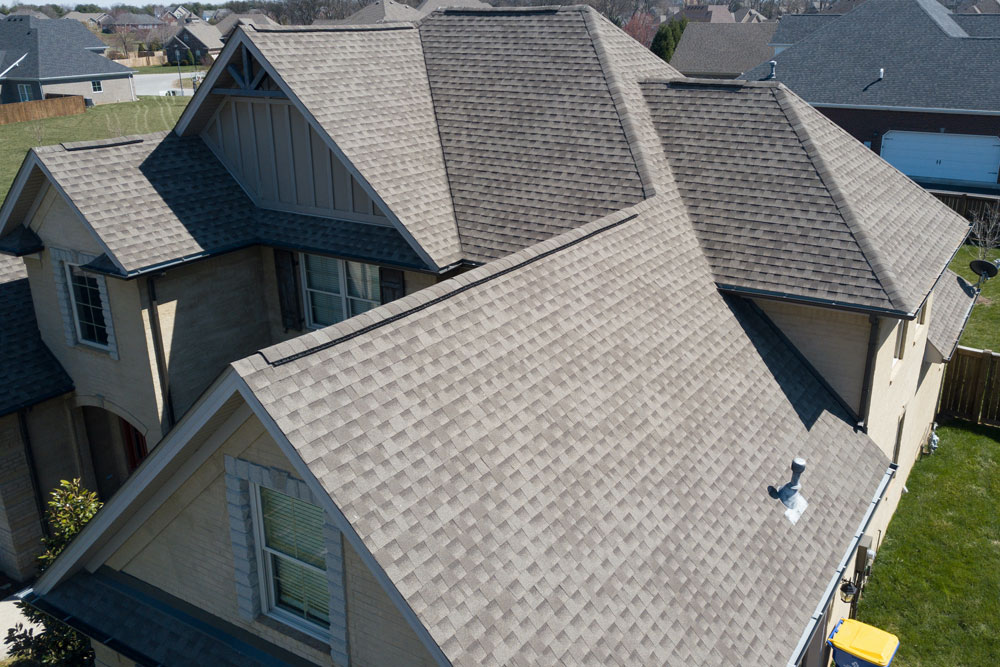
Replacing your roof can be one of the most significant home improvement projects do you for your home. It takes careful planning to get the work completed efficiently and on schedule. Most importantly, the time of year that you book a contractor can have a major impact on how long the work will take.
It’s often said that you should only replace a roof in the fall—but is this really the case? In fact, each season has its advantages and disadvantages, and an experienced roofing contractor will take this into account when scheduling the job.
If you’re planning a roof replacement, here’s what you need to know about the pros and cons of each season, and what they mean for your timing.
Winter has major disadvantages when it comes to replacing a roof in a cold-winter climate. The chances of severe rain or snow are high, creating safety risks for the contractors and introducing delays that increase costs.
What’s more, some of the best roofing materials are harder to use in cold temperatures, with asphalt shingles, for example, becoming more brittle and more likely to crack during installation.
Lastly, most sealants won’t work as effectively when the temperature drops, making them harder to apply and taking longer to securely stick the shingles together.
All this means that while it may only take a few days in warmer weather to replace a roof, in the winter, you could be looking at weeks, with all the extra cost and inconvenience associated with the colder weather.
That doesn’t mean replacing a roof is impossible in winter, especially if it’s an emergency job. A reputable roofing professional from our network of recommended contractors can provide you with an honest estimate of how much longer it might take, how much more it might cost you, and whether your choice of materials will be limited. Also, on the plus side, roofing contractors typically aren’t as busy in winter, so you should be able to hire one fairly easily to get your job done.
Spring is the season when many roofing problems become obvious, with any winter damage showing up as leaks when snow melts or heavy spring showers arrive. The good news is that spring is one of the best times to schedule a roof replacement, for several reasons.
First, materials like asphalt shingles are designed for typical spring temperatures that are not too hot or too cold. They’ll be easier to work with, and the adhesive will set more quickly to provide a strong seal in just days.
However, spring weather can be notoriously changeable, and a sudden storm can cause lengthy delays. An experienced contractor will work this into their schedule and may charge a little more to cover the uncertainty. If you’re planning on a spring roof replacement, it’s especially important to know in advance what extra charges or inconveniences might be involved if the weather gets in the way.
Depending on your climate, summer can be a great time to schedule a roof replacement. There’s more chance of the weather being reliably dry, and it’s likely that the temperatures will be high enough for the shingles or other materials to adhere quickly and securely.
Nonetheless, there’s a risk that the weather could grow too hot and humid to be ideal. On extremely hot days, materials can become difficult to work with, and they may warp or partially melt before they’re properly in place. On the hottest and most humid days, a sensible contractor may limit their working hours for safety’s sake.
Another downside for a summer roof replacement is that roofing contractors are often at their busiest during this time of year, and it can be hard to schedule a job without paying a premium, especially if you’re trying to book a last-minute project.
That being said, if the weather is consistently warm, and you can find a contractor who’ll work to your schedule, summer is a great time for a roof replacement.
Fall’s typically milder and dryer weather is the main reason why it’s such a popular time for roofing work, as the materials are at their easiest to work with, and disruption is less likely. What’s more, many people decide to get their roof fixed in the fall to prepare for the coming winter.
For both of these reasons, it can be hard to schedule a project unless you plan ahead and book earlier in the year. Even so, you may pay a little extra to secure an appointment during this most popular time.
You can replace your roof any time of year, but if possible, avoid winter or the hottest parts of summer. A mild spring or fall with predictable weather is the best option, so long as you can find a contractor with space in their schedule.
Whichever season you choose, MyHomeUpgrade.ca can put you in touch with a recommended contractor in your area, as well as provide flexible financing options and exclusive offers to ensure your roof replacement is as affordable as possible.

Any major home renovation will be a costly exercise, but the expense can quickly spiral out of control if the project isn't carefully planned and competently carried out. The first step toward achieving home renovation success is to avoid these seven common planning mistakes that can greatly increase the cost and hassle of any project,…

A bathroom renovation can make a huge difference in your home, but it can also be an expensive home improvement project to take on if you’re not careful. Because of the potentially high cost, many people delay upgrading their bathroom and miss out on all the extra comforts and convenience that a remodel can provide.…

If you're planning a kitchen renovation, there are countless design ideas available online to use as inspiration. Using a pre-existing design is a great way to save money on your kitchen renovation. However, your kitchen should be an expression of your tastes and personality, so relying too much on someone else's ideas can lead to…